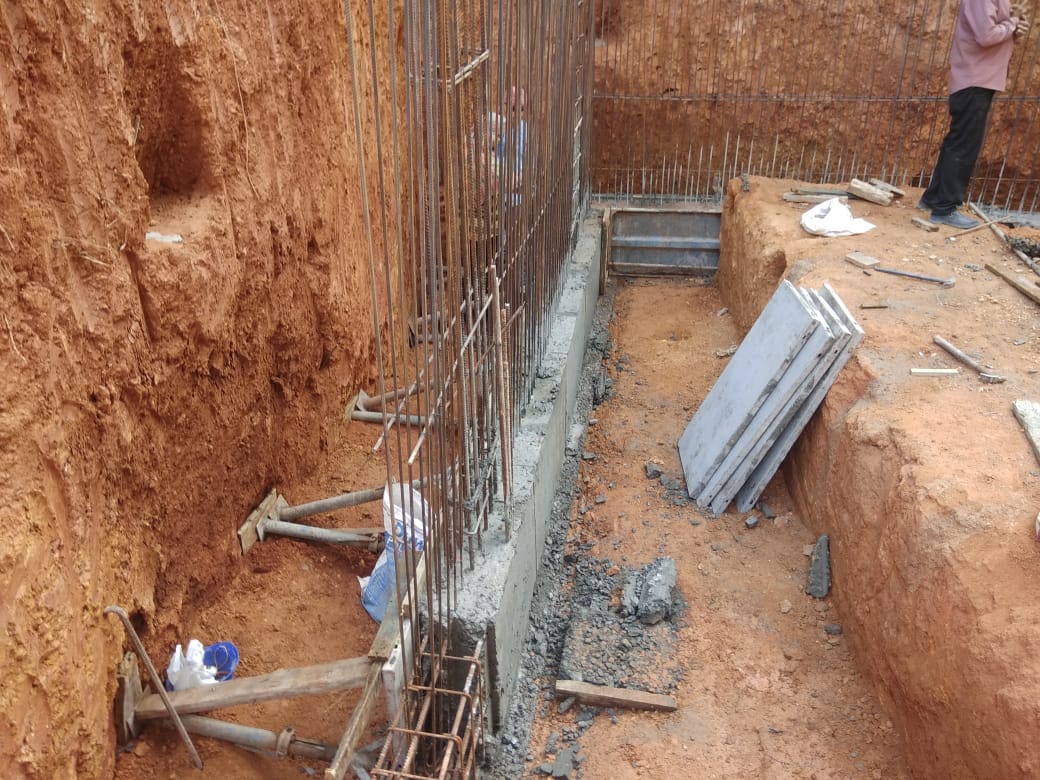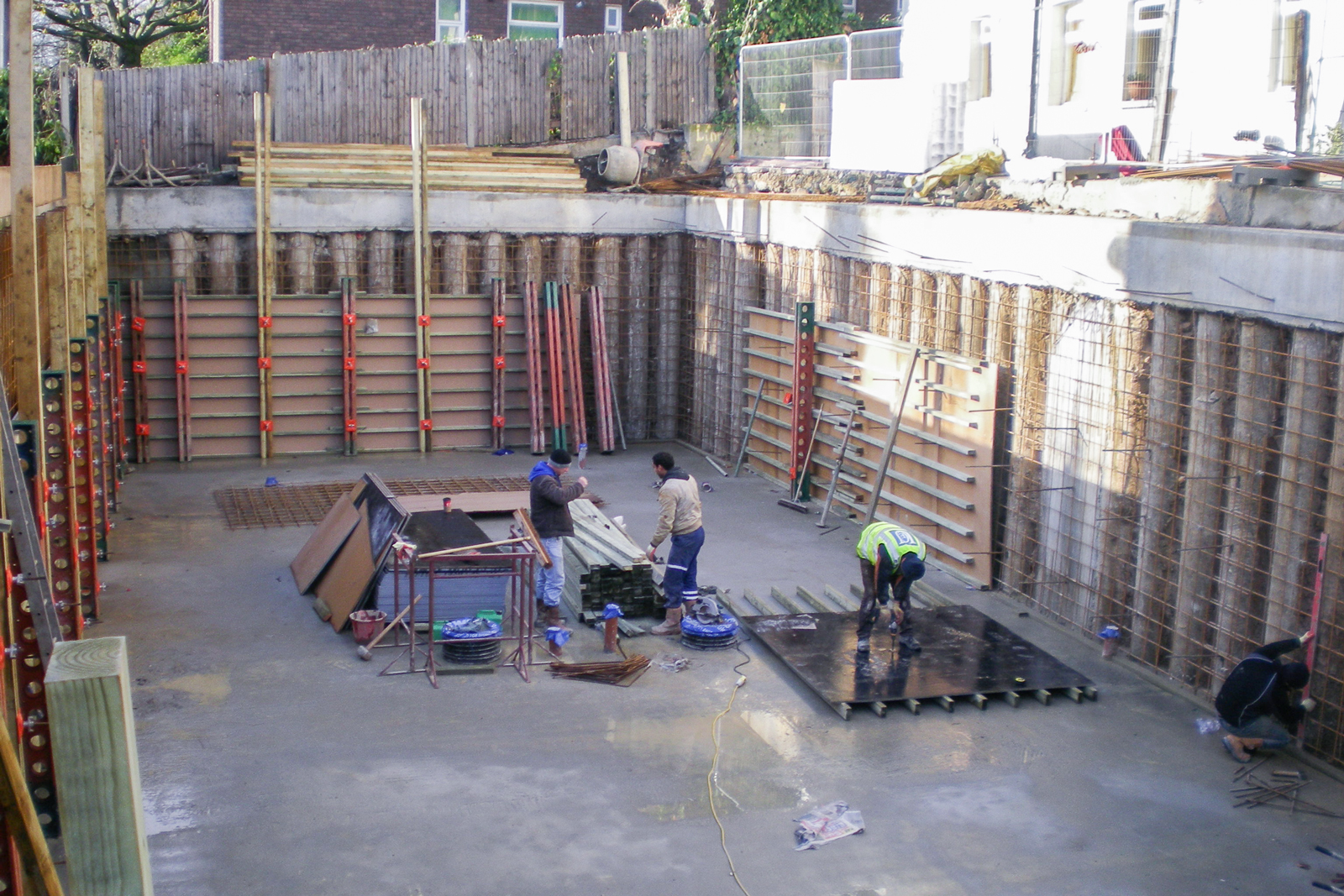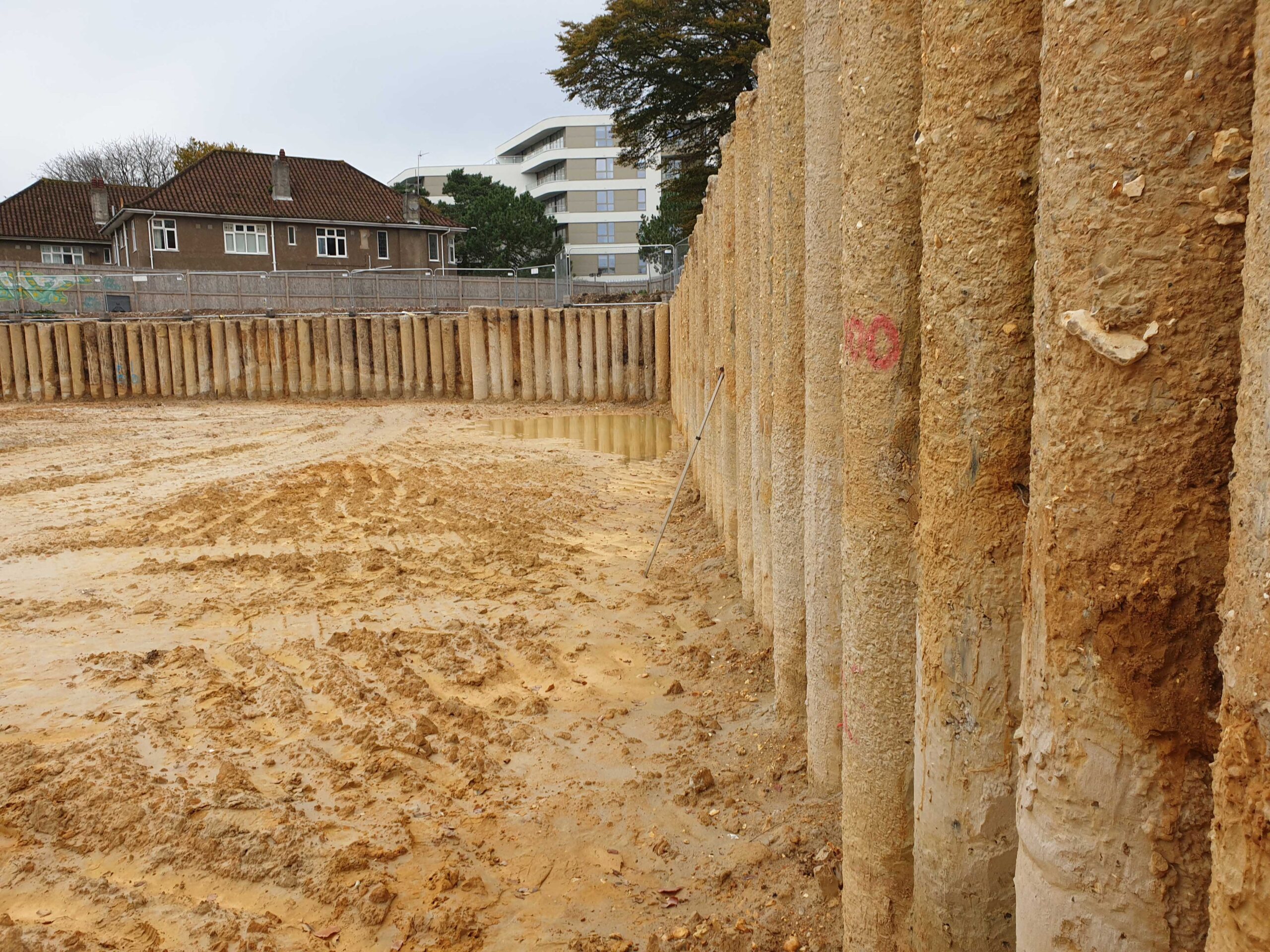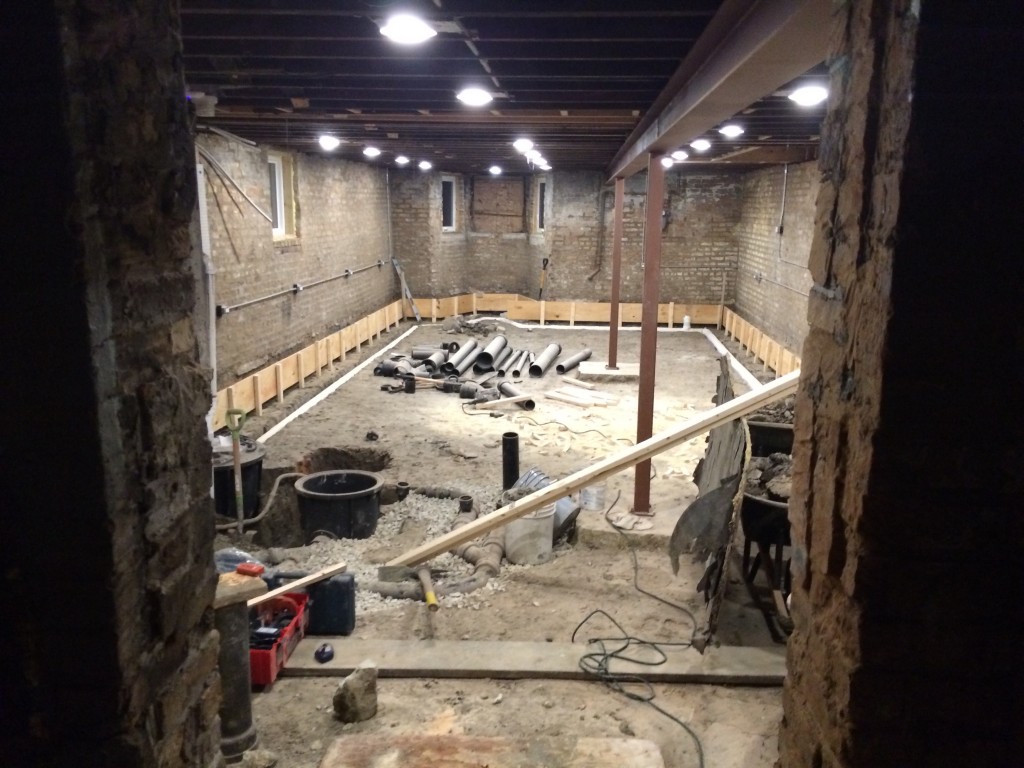
Pin on Hardscapes
BAretired (Structural) 23 Apr 23 22:24. Make sure your floor construction is adequate to resist the "at rest" soil pressure at the top of the wall, particularly where joists are parallel to the wall. Add wall/floor detail for both perpendicular and parallel joists. Buttresses deliver concentrated reactions, resisted by floor construction.
an tigin (the wee house) basement retaining wall, west side
Snap a chalk line on the floor for the stud wall's bottom plate. Build the stud wall on the floor, keeping the bottom plate closest to the concrete wall. Build the stud wall a minimum of 1 quarter inch from the ceiling. If there's already a drop ceiling, keep the stud wall beneath it.

Basement Retaining Wall and Footing Curb Two Flat Remade
P s = K a x W s x h. = 0.333x10x3.2. = 10.67 KN/m width of wall. Since the design of basement wall is as cantilever, so bending moment is maximum at the base of wall. Fig: Basement wall. Bending moment at the base of wall can be calculated as. M x = P a * h/3 + P s * h/2. [Since, soil pressure is uniformly distributed and surcharge load is.

Basement Retaining Wall with Eccentric Footing
This stunning retaining wall and walk-out basement showcase the Quarry Mill's Cheyenne real granite cobblestone thin veneer. Cheyenne is a natural granite thin stone veneer in earthy browns and greys. The stone is cut from natural granite that is collected rather than quarried in the traditional sense. Cheyenne is a true fieldstone in that it.

Basement steps using segmental retaining wall blocks. Basement steps
A small retaining wall less than three feet in height will cost an average of $5 to $8 per square foot, if you build it yourself. Larger retaining walls, which are not DIY-friendly, are pricier.

Retaining wall in basement Builders in Calicut Apartments for Sale
Designing a Basement Wall. Basement walls are essentially retaining walls which in most instances, in addition to the lateral forces from soil, pore pressure and surcharge must also carry axial forces due to gravity loads from slabs. At the preliminary design stage, the designer of a basement wall must make a decision between designing a.

basement retaining wall design example lineartdrawingsanimegirl
A typical basement retaining wall is composed of four main components: the Stem which is the vertical portion, the Toe is the portion of the footing at the front of the wall, the Heel at the.

Walkout basement with limestone tiered retaining walls Google Search
5) Interlocking Wall Blocks. If your basement already has a walkout entrance, and you are just looking to add retaining walls around it, one of the easiest ways to do so is to use interlocking wall blocks. This is a project you can do yourself if you are comfortable using a circular saw, or if you want to learn how to use one.

20+ Delightful Walkout Basement Retaining Wall Ideas Inspiratif Design
Start by stapling batting and fabric to the wall, then stretch wide ribbon on the diagonal from floor to ceiling to make diamonds. At each intersection, hammer in a decorative furniture tack to create a tufted look. Install baseboard and crown molding last. 03 of 18.

Basement walls construction for house grey structure guide
2 Versatile block retaining walls. 3 Poured concrete retaining walls. 4 Stone retaining walls. 5 Basement retaining wall made of caged rocks. 6 Wood wall: retaining walls with a rustic touch. 7 Seated retaining wall. 8 Basement retaining wall with stairs. 9 Some extra basement retaining wall features. 10 A few tips.

Piled Retaining Walls Basement System
The design of restrained retaining walls may be time-consuming, particularly for two-story retaining walls. But how do you design a basement retaining wall?.

Retaining Walls & Basements Specialist Piling Solutions
Making square cuts is challenging. Also, components are heavy and hard to manage alone. Plan on about three days to build a wall 4 feet tall by 15 feet long. Cost: $10 to $15 per square face foot installed, depending on your region—higher if extensive excavation, soil prep, and backfilling are needed.

retainingwallsandwalkoutbasementdetails Custom Homes by
A retaining wall is designed to resist those forces, usually with the use of an L-shaped footing (for concrete walls) with a base approximately 1/3 to ½ the height of the wall to prevent overturning, and a notch (or keyway) at the end of the footing extending farther down to prevent sliding. These walls are heavily reinforced with rebar to.

Basement Retaining Wall and Footing Curb Two Flat Remade
If pile spacing in a contiguous pile basement retaining wall is small then the contiguous piles will also need to be constructed using the hit-miss sequence. If pile spacing is say 100 mm C/C then it will be practically impossible at site to construct the contiguous piles in a sequential manner next to each other. In such a scenario, one may.

Walkout basement retaining wall and stone steps. Sunken patio
Hoachlander Davis Photography. Save Photo. Retaining Wall 2. McElroy Architecture, AIA. Example of a 1960s master medium tone wood floor bedroom design in San Francisco with white walls. Save Photo. Simply Stately. A. Perry Homes. Basement playroom with a visible stone retainer wall outside.

Basement Retaining Wall and Footing Curb Two Flat Remade
A typical basement retaining wall is composed of four main components: the Stem which is the vertical portion, the Toe is the portion of the footing at the front of the wall, the Heel at the backfill side, and the Shear Key below the footing. Frequently the basement walls are also laterally restrained at the base by the slab on grade, so the.